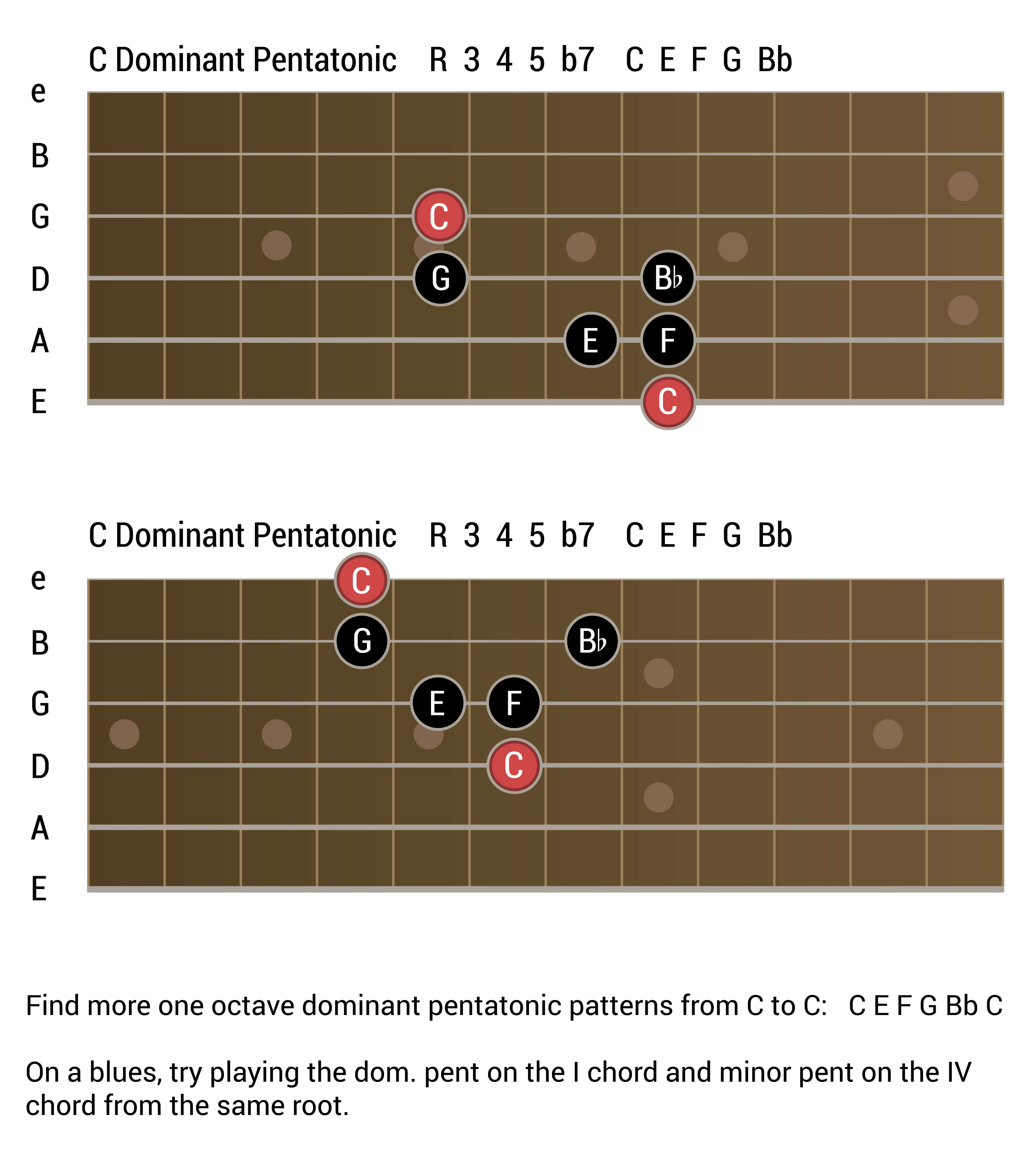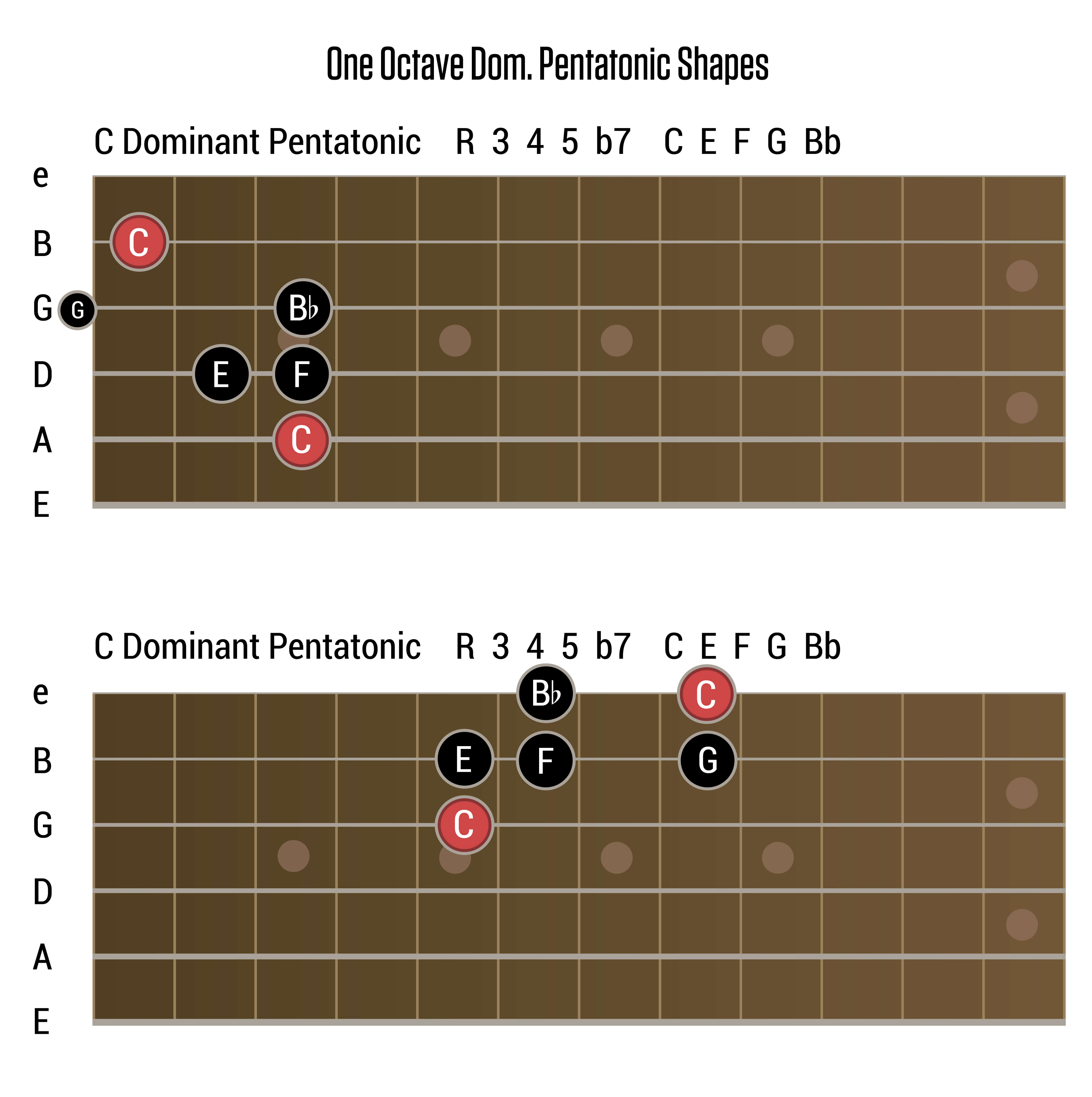One of my favorite go-to scales of recent years, especially when playing in the context of a dominant 7th chord is a rather splendid hybrid pentatonic scale that we could call the dominant pentatonic. Well actually we could call it anything we want to, just depends how silly we’re feeling today!
The scale fits the dominant 7th chord so well because it contains all 4-chord tones from that chord plus a 4th. Take a C7 chord for example, which is spelled root-3rd-5th-b7th, the notes C-E-G-Bb. The C dominant pentatonic scale has the notes C-E-F-G-Bb.
Because there is no second, it doesn’t sound as scale-y as the major scale or major pentatonic and the 3rd-4th degree gives you a hip, almost eastern quality, reminiscent of the melodies of George Harrison and the fast runs of the Mahavishnu Orchestra guru John McLaughlin. Sprinkle in a little tonal magic from Eric Johnson and you’ve got an idea of where you might have heard this scale before.
To practice the scale and to really get it under your fingers I suggest taking the one octave patterns as presented in Fig. 1 and Fig. 2.
FIGURE 1

FIGURE 2

Try overlapping them and moving between the positions connecting them on the neck. As for musical applications if you find yourself with any kind of static C7 vamp, a funky C9 (hello James Brown!) or even a hard rocking C power chord, experiment with it by jumping into the scale with both feet, or rather both hands.
Check out the improvised playing in Audio Clip 1, where I’m using the C dominant pentatonic scale over a static C7 rock jam.
Another application I really enjoy is over the blues. Whereas many players reach for the more traditional minor pentatonic in a blues context by playing the dominant pentatonic on the I chord of the blues the 3rd is targeted and then by switching to minor pentatonic (on the IV chord) there is a nice movement of chord tones and therefore a change of mood to the more traditional blues/rock sound on the IV chord. Variety is the spice of life and all that.
So for example on a C7 blues, play the C dominant pentatonic on the I chord, which against C7 yields root-3rd-4th-5th-b7th and then Cm pentatonic (C-Eb-F-G-Bb) on the IV chord (F7) which gives you the 5th-b7th-root-2nd-4th of the IV chord, F7. Tasty!
Check out the improvised playing in Audio Clip 2, where I’m using the C dominant pentatonic scale over the I chord of a C7 blues.
Don’t forget to practice this in different keys and if you’re aware of the mixolydian mode think of this as it’s melodic younger brother, friendly and with eastern tendencies.


